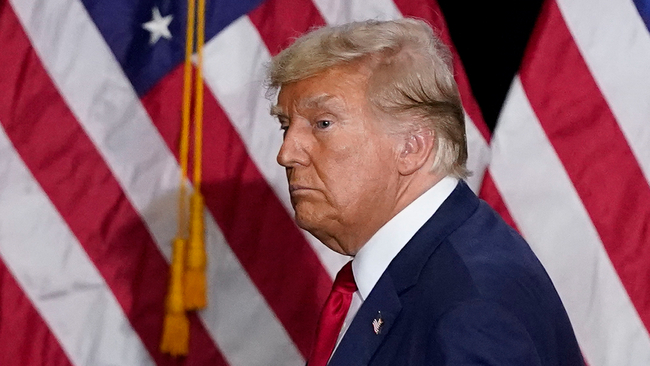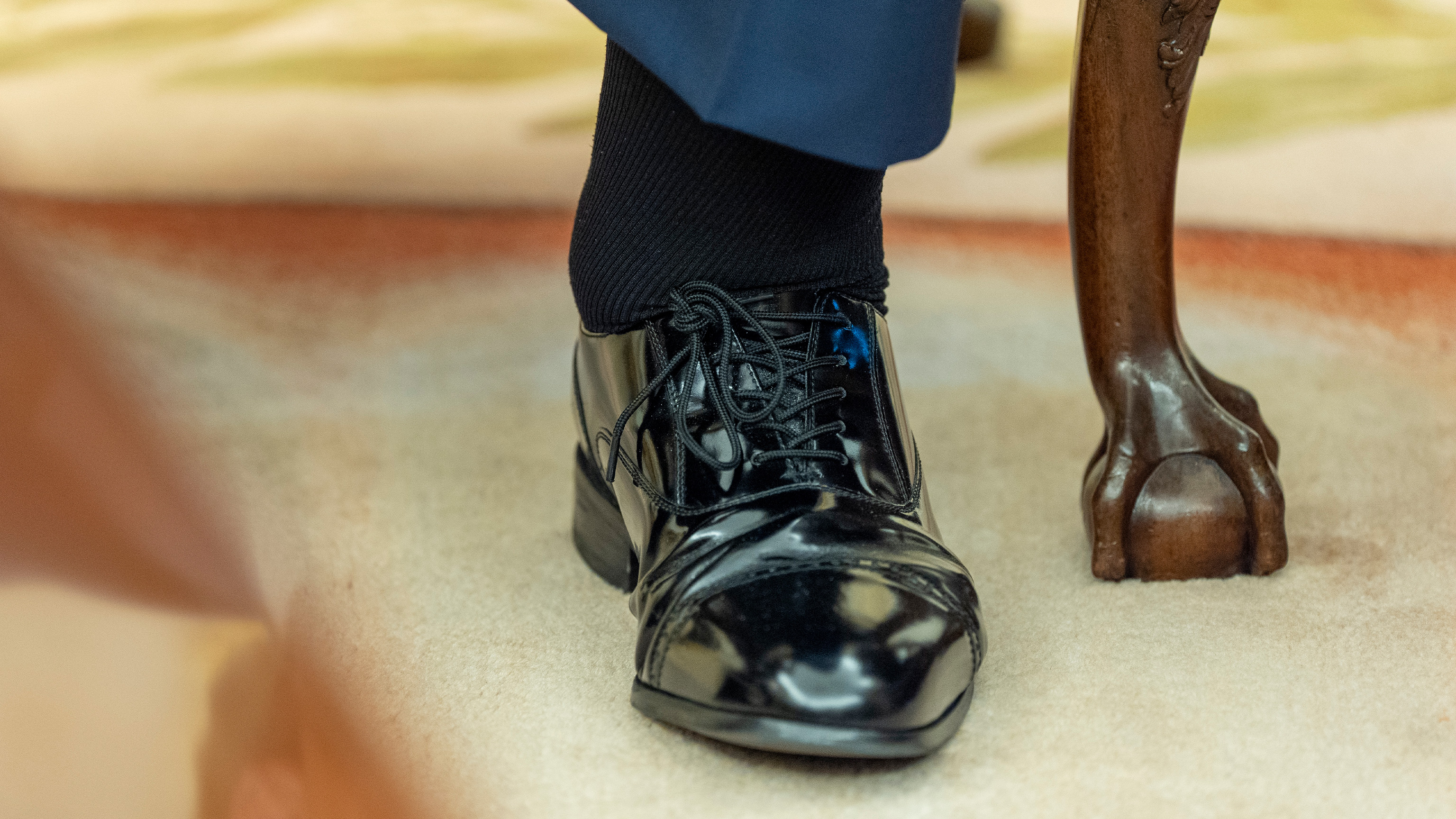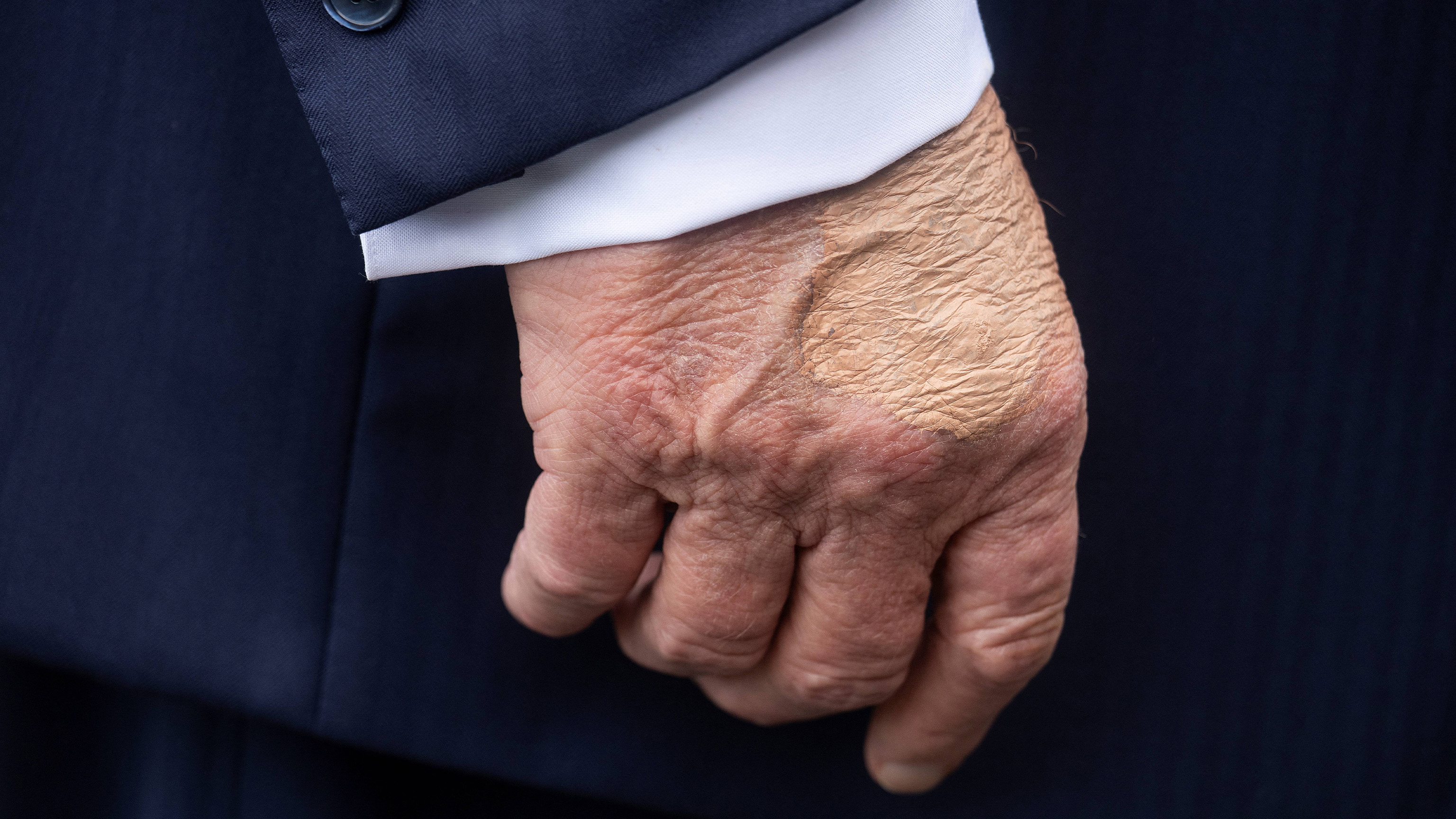President Donald Trump underwent medical testing after he had been seen with deep bruises on his hand and swollen legs in recent days, and was diagnosed with chronic venous insufficiency, White House press secretary Karoline Leavitt said Thursday.
Leavitt said Trump noted “mild swelling in his lower legs,” which prompted the White House medical team to evaluate him. They concluded that Trump has chronic venous insufficiency — a condition in which there isn’t adequate blood flow in the veins in the legs. This can cause the blood to pool, causing swelling in the lower legs.

“The president underwent a comprehensive examination including diagnostic vascular studies, bilateral lower extremity intravenous doppler ultrasounds were performed and revealed chronic venous insufficiency, a benign and common condition, particularly in individuals over the age of 70,” Leavitt said in the Thursday White House press briefing.
While chronic venous insufficiency is not considered a serious medical condition and it is treatable, it can be uncomfortable or painful. The condition is very common in older adults. Treatment typically can include medication to increase blood flow, elevating legs, or minor procedures to improve blood flow, or surgery in more severe cases.
MORE | What to know about chronic venous insufficiency

There was no evidence of deep vein thrombosis or arterial disease and an echocardiogram showed normal cardiac structure and function, Leavitt said, adding that all results from testing were “within normal limits.”
Leavitt addressed photos circulated online that show minor bruising on the back of the president’s hand, attributing the bruising to “minor soft tissue irritation from frequent handshaking and the use of aspirin.”

“The president remains in excellent health,” Leavitt said.
Leavitt was later asked whether Trump had any discomfort relating to the condition, and she said that he felt none.
“Nope. No discomfort from the president at all. And you probably all see that on a day to day basis. He’s working around the clock,” Leavitt said.
Leavitt also said that the doctor’s full letter would be released soon and said that it had all the information that reporters would need as it relates to treatment, when asked by reporters.
The president underwent his annual physical at Walter Reed National Military Medical Center in April. The report from Capt. Sean P. Barbabella, who performed Trump’s physical, stated that the president was “in excellent health” at the time.



